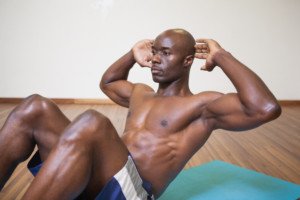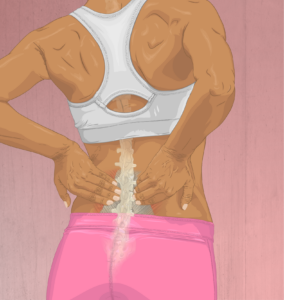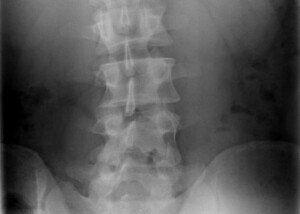
Find out from a chiropractor, not a layperson or “fitness expert,” why your back cracks during sit-ups and what to do about this annoying and to some people, unnerving response to the exercise.
A personal trainer is perhaps not the best person to explain why your back makes cracking sounds when you do sit-ups.
“Back cracking during sit-ups, or during any activity, is commonly caused by the facet joints gapping or spreading,” explains Dr. Jeff Langmaid, DC, founder/owner of The Evidence Based Chiropractor, LLC, in Tampa, FLA, a research-based marketing and practice growth company that serves thousands of chiropractors across the globe.
Dr. Langmaid continues, “The facet joints are load-bearing joints on the posterior, or the backside, of the spine.
“As they go through their range of motion, they can release gas, causing a ‘pop,’ ‘click’ or ‘cracking’ sound — similar to a knuckle.
“Most often that sound does not indicate pain, but on occasion, it certainly can.”
The cracking sound is due to the release of gas bubbles from the synovial fluid which helps lubricate the joints.
So when your back cracks while you do sit-ups, this is normal as long as there is no pain, and it’s nothing to worry about. However, for some people it can be annoying.

Source: myupchar. com
Dr. Langmaid explains, “In terms of solutions to eliminate back cracking, one option would be to not extend into that full range of motion, as cracking often occurs when the joint is stretched.”
The stretching can make one of those gas bubbles pop.
“Occasionally, cracking can be accompanied by pain,” says Dr. Langmaid.
“Not going through the full range of motion and staying in a safe and controlled range of motion can prevent the joint from fully gapping and reduce the snapping, popping, clicking or cracking sound.
“Additionally, when performing sit-ups, it is imperative to use proper technique.
“This will allow you to maximize the workout and gain optimal muscle strength without placing too much stress on your spine.”
Proper Technique for Sit-Ups
To perform a sit-up correctly, start by lying on your back with your knees bent and feet flat on the floor.
Place your hands behind your head or across your chest, making sure not to pull on your neck.
Engage your core muscles and slowly lift your upper body towards your knees without rounding your back, keeping your lower back pressed to the floor.
Exhale as you come up and pause briefly at the top before lowering your back down with control.
Finally, you should avoid using momentum or jerking movements.
Proper technique with the sit-up is not a guarantee that your back won’t crack, but at least now you know that it’s just a normal occurrence when bubbles form in the synovial fluid and they get popped.
 Jeff Langmaid, DC
Jeff Langmaid, DC
 Lorra Garrick has been covering medical, fitness and cybersecurity topics for many years, having written thousands of articles for print magazines and websites, including as a ghostwriter. She’s also a former ACE-certified personal trainer.
Lorra Garrick has been covering medical, fitness and cybersecurity topics for many years, having written thousands of articles for print magazines and websites, including as a ghostwriter. She’s also a former ACE-certified personal trainer.
.


























